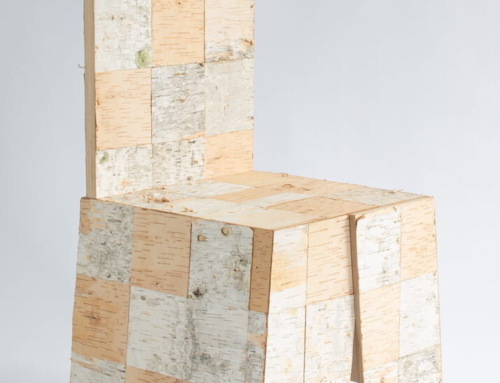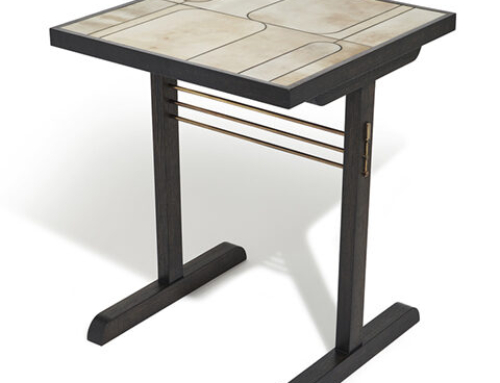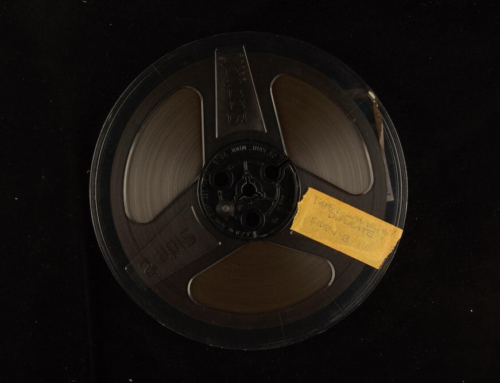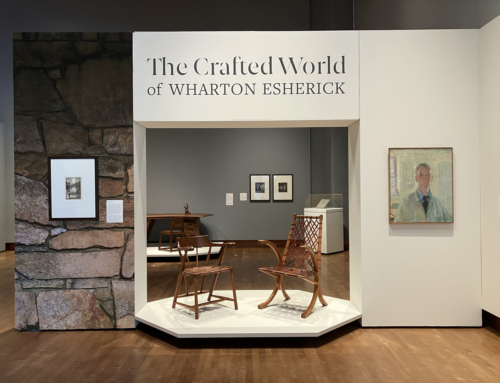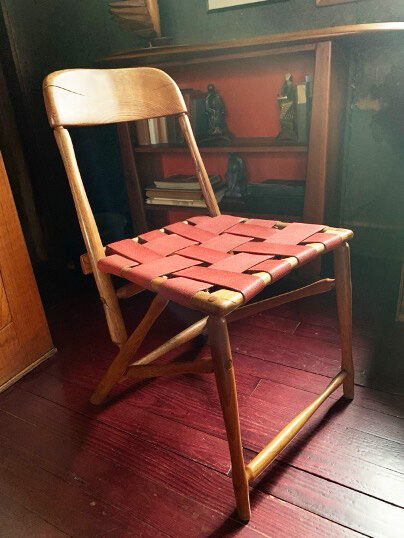 Wharton Esherick, Hammer Handle Chair, 1939
Wharton Esherick, Hammer Handle Chair, 1939
Last month we made an exciting discovery about one of our Hammer Handle Chairs! I was couriering the Crafted World of Wharton Esherick exhibition to the Chazen Museum of Art in Madison, Wisconsin when I noted a faint inscription on one of the hammer handles of our 1938 Hammer Handle Chair. After each piece was uncrated in the Chazen’s gallery, I would diligently pour over it and write up a condition report to document any possible changes a piece may have undergone during its long journey. I was using the Chazen’s high-powered examination light to carefully examine the chair when this faint inscription came into my view for the first time. With the help of one of the Chazen’s preparators, I was able to determine that the imprint reads “Keen Kutter” —the name of an active tool and hardware brand dating back to the 1860s.
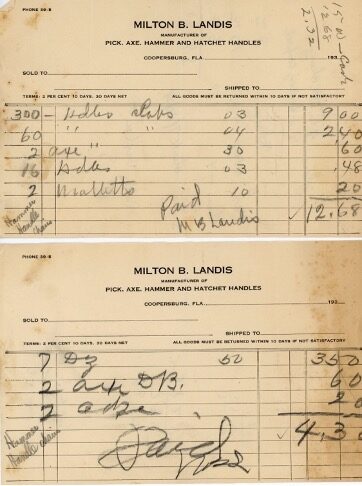 Milton B. Landis Invoice from Wharton Esherick Museum Collection
Milton B. Landis Invoice from Wharton Esherick Museum Collection
This new information further illuminates the materials we steward in the archives related to the many dozens of Hammer Handle Chairs Esherick made between 1938 and 1952. These include original receipts from Coopersburg Handle Works where Esherick purchased over three hundred hammer handles in the late 1930s, and from Robert L. Latimer and Co., which supplied Esherick with the canvas belting made for factories that he creatively reused for strap seating. We are also fortunate to maintain detailed invoices for these chairs that document the labor and material cost that went into the creation’s final price. This Keen Kutter inscription deepens our understanding of the early twentieth-century’s vast world of industry that supplied fine artists and craftspeople like Wharton Esherick with tools, supplies, and services for their practices.
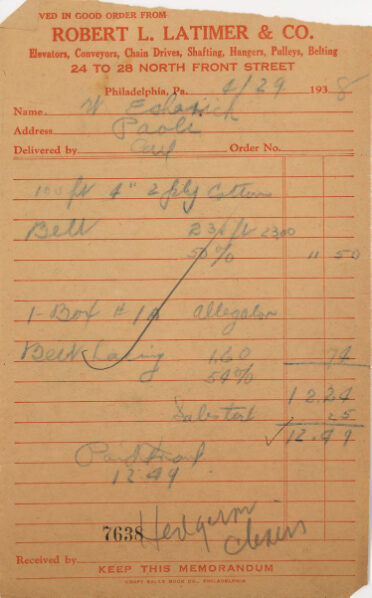 Robert L. Latimer Invoice from Wharton Esherick Museum Collection
Robert L. Latimer Invoice from Wharton Esherick Museum Collection
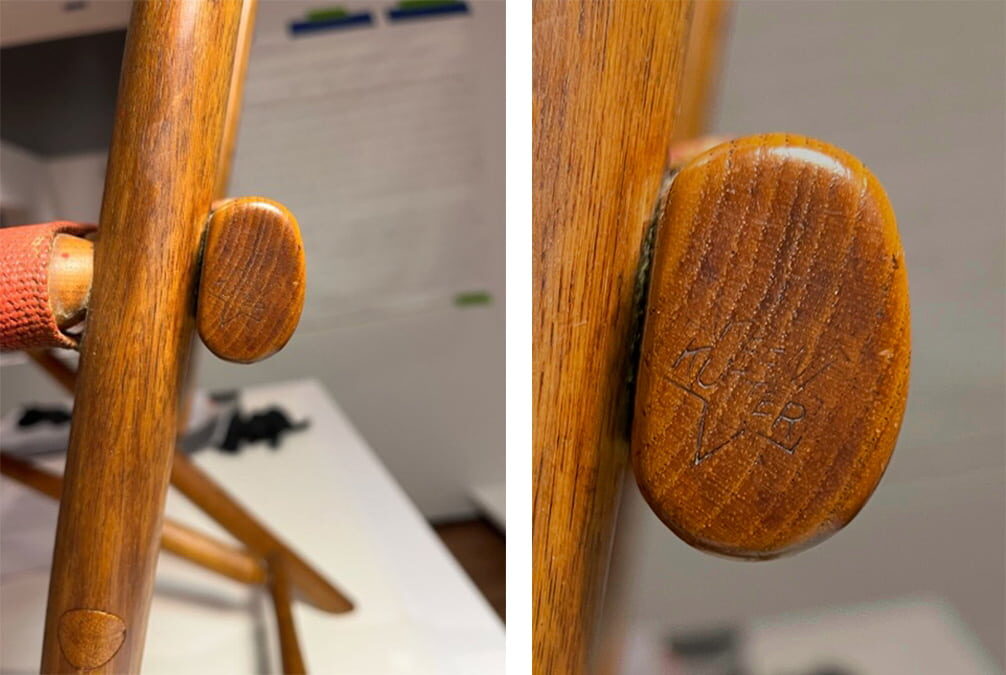 Keen Kutter detail on Hammer Handle Chair
Keen Kutter detail on Hammer Handle Chair
A discovery such as this would have been rather difficult to make in Esherick’s historic Studio. An artist-made domestic space is fundamentally different from a modern museum gallery, especially when it comes to lighting. However, this discovery is also a product of a particular type of looking and careful attention we pay to objects when assessing their condition after an experience as strenuous as travel. We were pleased to see that Esherick’s work traveled to Madison safely! Now in its second venue, the Crafted World exhibition offers the opportunity to see a large collection of Esherick’s work anew in a contemporary gallery space and — even when 800 miles from the Studio – discoveries like Keen Kutter are apt to emerge!
Post written by Ethan Snyder, Public Programs & Collections Manager
March 2025

